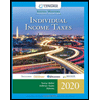
Accounts receivable
Accounts receivable refers to the amounts to be received within a short period from customers upon the sale of goods and services on account. In other words, accounts receivable are amounts customers owe to the business. Accounts receivable is an asset of a business.
Bad debt expense:
Bad debt expense is an expense account. The amounts of loss incurred from extending credit to the customers are recorded as bad debt expense. In other words, the estimated uncollectible accounts receivable are known as bad debt expense.
Allowance method:
It is a method for accounting bad debt expense, where uncollectible accounts receivables are estimated and recorded at the end of particular period. Under this method,
Direct write-off method:
This method does not make allowance or estimation for uncollectible accounts, instead this method directly write-off the actual uncollectible accounts by debiting bad debt expense and by crediting accounts receivable. Under this method, accounts would be written off only when the receivables from a customer remain uncollectible.
To describe: The approach of reporting bad debt expense under direct write-off method, and its disadvantages.
Want to see the full answer?
Check out a sample textbook solution
Chapter 8 Solutions
FIN.ACCT-TOOLS F/DECI.MAKERS-TEXT+WILEY+
- At year-end, Simple has cash of $12,000, current accounts receivable of $60,000, merchandise inventory of $37,200, and prepaid expenses totaling $5,200. Liabilities of $24,000 must be paid next year. Assume accounts receivable had a beginning balance of $20,000 and net credit sales for the current year totaled $2,400,000. How many days did it take Simple to collect its average level of receivables? (Assume 365 days/year.)arrow_forwardWhat is the gross profit for the period ?arrow_forwardCan you explain the correct approach to solve this financial accounting question?arrow_forward
- CarniTrin is a manufacturer of Carnival costumes in a highly competitive market. Thecompany's management team is seeking guidance on the use of financial performancemeasures to identify the key drivers of the company's financial performance and develop astrategy to improve it.The following data relate to the company for the year 2023: In its clothing division, the company has $18,000,000 invested in assets. After-taxoperating income from sales of clothing in 2023 is $2,700,000. Income for theclothing division has grown steadily over the last few years. The cosmetics division has $42,000,000 invested in assets and an after-tax operatingincome in 2023 of $5,700,000. The weighted-average cost of capital for CarniTrin is 10% and the 2022’s after-taxreturn on investment for each division was 15%. The general manager of CarniTrin has asserted that in the future, managers shouldhave their compensation structure aligned with their performance measures with nofixed salaries. However, the…arrow_forwardFinancial accounting problemarrow_forwardgeneral accountingarrow_forward
- Principles of Accounting Volume 1AccountingISBN:9781947172685Author:OpenStaxPublisher:OpenStax College
 Individual Income TaxesAccountingISBN:9780357109731Author:HoffmanPublisher:CENGAGE LEARNING - CONSIGNMENT
Individual Income TaxesAccountingISBN:9780357109731Author:HoffmanPublisher:CENGAGE LEARNING - CONSIGNMENT





